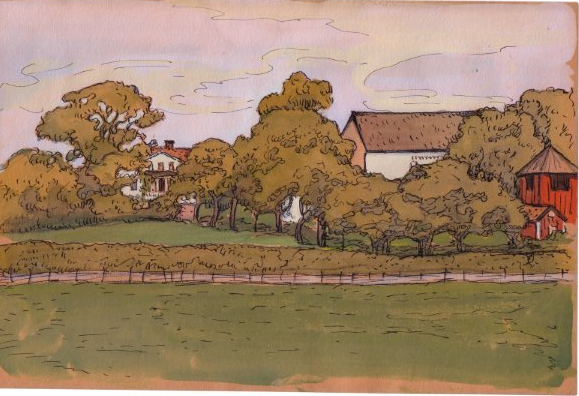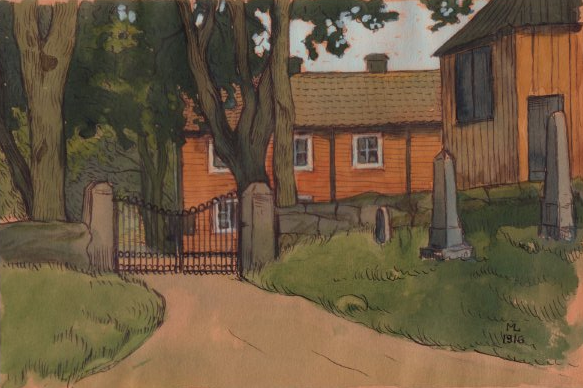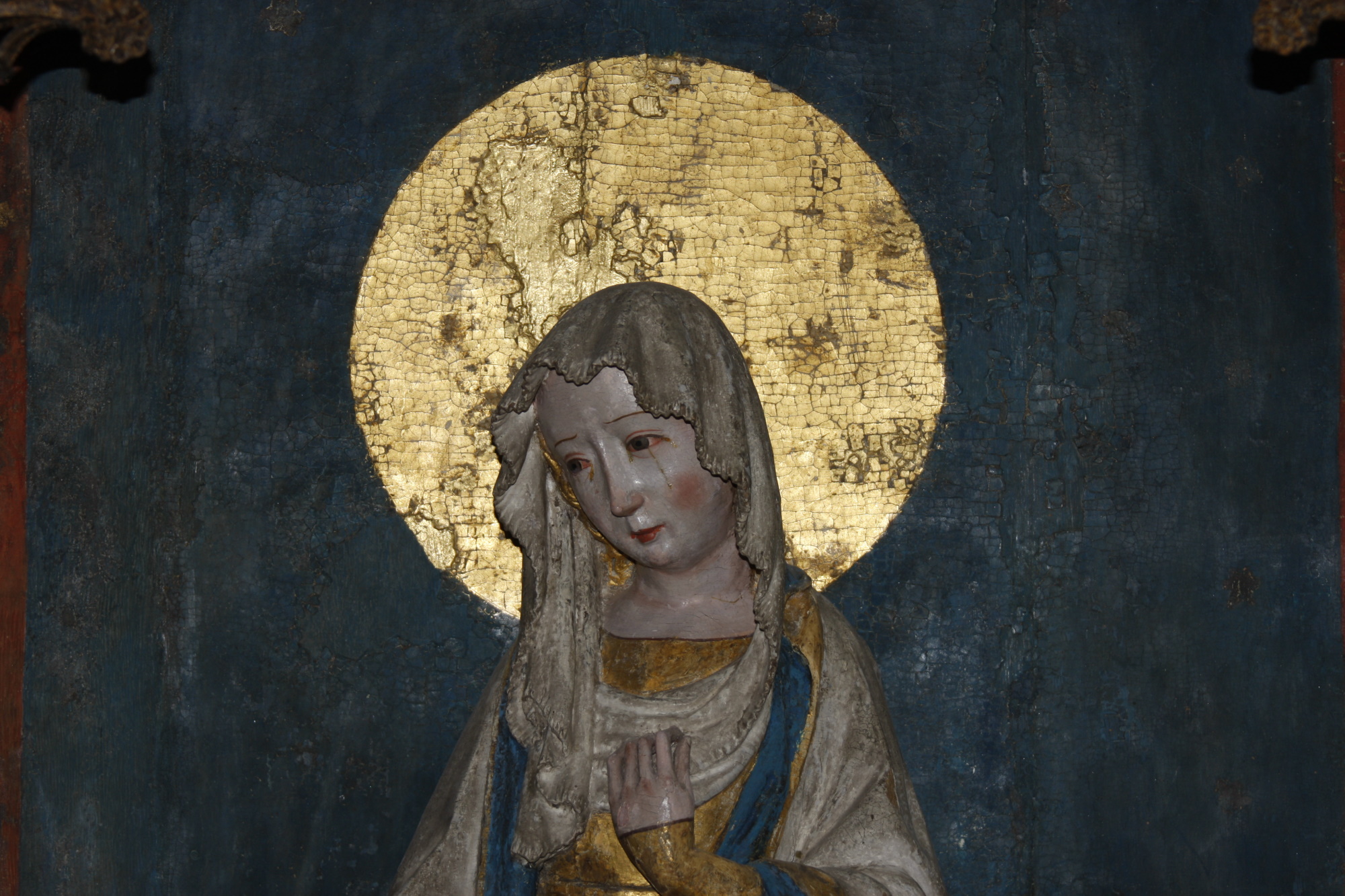

The picture of Askeby abbey and parsonage reflect the environment around the church and parsonage as it appeared during the beginning of the 20th century. The original is painted for about hundred years ago, by Märta Lindblom (1871-1946), married to Johannes Lindblom. Märta Lindblom was educated at the Royal Swedish Academy of Arts in 1889-1904 and she also studied in Paris. She participated in several exhibitions, e.g. the one arranged by the Association of Swedish Female Artists in 1911 in Stockholm. She painted mostly portraits, for example the ones of her parents-in-law, Christian Fredrik and Anna Lindblom, that hangs in the congregation house.
In this watercolour painting we see buildings embedded in leafy summer greenery. At the far left we can recognize the present congregation house. It was built and served as the priest’s residence only at the time period when C F Lindblom serviced as reverend in the congregation (1886-1917). After that the building became residence for the parsonage tenant and nowadays it serves as Askeby congregation house.
Between the parsonage and the church, behind an alley of maple trees, one may glimpse the former whitewashed house, called Kapp. Kapp held the residences for the parsonage personnel. On the first floor was the servant room and the second floor housed the priest’s wagoner.
Parts of the abbey walls south of the abbey walls were used as foundation for the small red house which was the root cellar, now torn down, and for the bell house which is intact.
There was also an appurtenant field to the parsonage, which on this picture stretches down to the thick spruce hedge along the road. The hedge was removed in 1924, and the road that the alley of maple trees leads to was rebuilt in the beginning of the 1960s. The field on this side of the spruce hedge belonged to the West House.
To capture this pretty view, the artist had to walk out on the West House field. She may have been inspired of a photograph taken by her brother-in-law, Andreas, and which she used as a model. The photograph is taken in 1912 and was used by Andreas Lindblom in his article about Askeby church in the work of Swedish Churches (see the section about Andreas Lindblom).
We are happy to display on our website yet another motif of Askeby by Märta Lindblom, Askeby churchyard. On this side of the southern entrance of granite pillars and iron gate lies the Lindblom family grave to the right and behind it is the belfry, resting on part of the abbey wall. Andreas Lindblom describes in his childhood narrative, “Lille Jonathan,” about his visits to the belfry: “There were giant bells hanging in huge beams. It was dark and frightening as the shutters were closed and the light passed through in sharp streaks. The smell was queasy of tar, oil, and fresh ropes. The bier, the coffins of the poor, the rusty old grave crucifixes, and old funeral wreaths that were kept for years, all added to the sense of decay and sentence.”
On the south side of the churchyard by the so called Belfry Road, there was a large red-painted log house. In the ground floor there was an almshouse. This house also had a kindergarten and a teacher’s residence. The building was torn down in 1924, and was replaced by a new school house.
Many thanks to Tomas Uddling, Sigtuna, who made his grandmother’s pictures available to us, and to Anna Lisa Gustavsson, Askeby, who generously shared her own memories with us!
